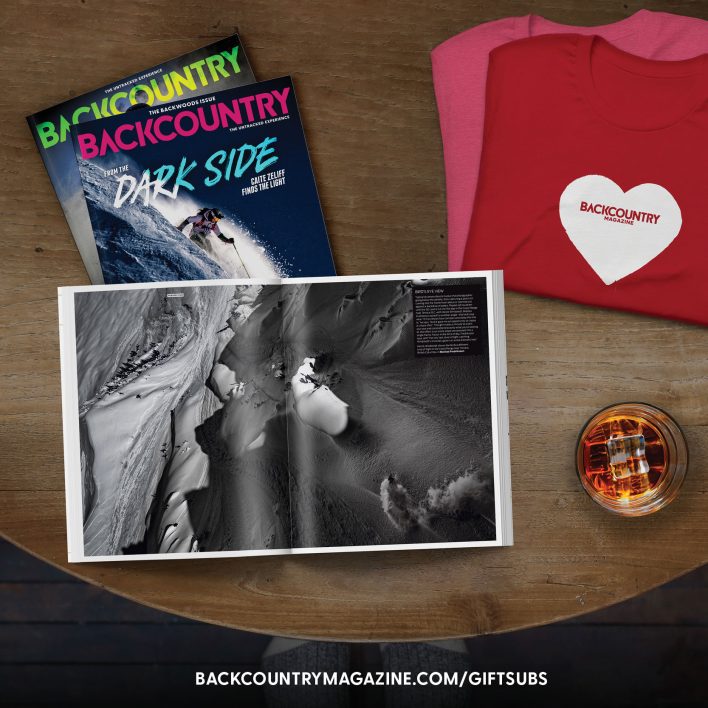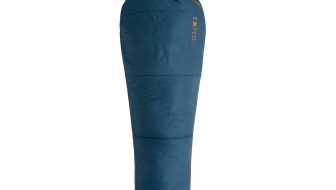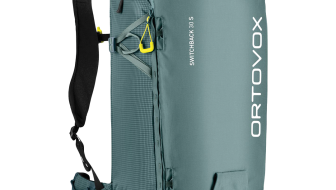A few weeks ago, contributor Seth Heller dove into ski-mountaineer Caroline Gleich’s 2016 attempts of Mt. Cook and Mt. Dixon in New Zealand. In his article, “Just Walk Away,” Heller discusses Gleich’s decision-making process that led her and her team to turn around before reaching Cook’s summit. And in Heller’s interview with Gleich, her motivations and past experiences that informed that tough call are clear. Here’s what Gleich had to say. —The Editors

Caroline Gleich skis Mt. Dixon’s southeast face. [Photo] Rob Lea
Caroline Gleich: We helicoptered out and went to Queenstown. We just tried to find projects to do while waiting for a break in the weather so we could try Cook again.
We did the Grand Couloir at the Remarkables about five days later. It was almost a total whiteout, but it was good to practice navigating in those conditions. The couloir is pretty steep and has a lot of ice, so we paid attention on the descent to follow our tracks from the climb. We also skied Mt. Ollivier; it isn’t steep or glaciated, but it was a lot of trail breaking through heavy pack.
SH: Why did you choose to go to New Zealand during its spring season?
CG: There are a lot of intense storms that coat the mountain faces with sticky snow, which covers up the blue ice. Sometimes there are longer breaks in the weather, sometimes they’re shorter; it depends on the year. These coastal ranges make it tricky to nail down the conditions.
SH: Do you consider this New Zealand expedition a success?
CG: Anytime you go on a trip like that and come home safe, it’s a success. You want to learn something from every expedition, and sometimes what you learn is that there’s a wrong time to go into the mountains.
When you grow as an alpinist and pick harder and harder routes, you’re going to have to turn around more often. Sometimes turning around is the bravest thing you can do.
SH: How do you balance risk versus reward in the mountains?
CG: I’ve spent 13 or 14 years developing my mountain sense and getting to this point, but it’s always a psychological battle between pushing it and knowing when you can’t. It’s a fine line.
When I climbed Ecuador’s Mt. Chimborazo in November 2013, our team should probably have turned around, but we didn’t. We were trying to establish a new ski route down the north face. We were the only people on the mountain; a storm was coming in and the conditions were horrible—barely enough snow to ski on. I learned a ton from that about handling logistics.
I also keep in mind a quote I heard a while back: “The mountains are always guilty until proven innocent.” I always approach mountains with a huge amount of caution.
SH: You broke your foot last year. Did it bother you on this trip?
CG: A little bit, but not too bad. I got a Cortisone injection two weeks before the trip. I broke the Sesamoid bone, near the ball of my foot, and it’s still in two pieces. The doctors suggested surgery to remove it, but I don’t want to take the risk of throwing off my balance—I have sensitive feet and the balls of my feet are the balance points for everything athletic I want to do in my life.
SH: You’re a prominent activist against global warming. Did you notice any effects of global warming on this trip?
CG: I saw a huge amount of glacial recession; the Tasman Glacier, the Franz Josef Glacier…. I went to the Franz Josef Glacier with my family when I was seven years old. Comparing those photos against what I saw on this trip, the difference is glaring.
Melting glaciers have a real effect on the people who live near them. When I was in Peru, I saw how the moraines would terminate into these massive glacial lakes, which kept growing and growing. If there was a large icefall into those lakes, the communities downstream would get hit with a lot of destruction.
SH: How has climate change affected the mountains you climb?
CG: The historical routes are changing so quickly, because the mountains just get so unstable that big chunks break off. It’s like having to on-sight a route. Access gets more dangerous too.
Here’s an example: If the heat melts a small hole in the ice on a steep slope, the exposed rock will soak up the sun because it’s much darker than the snow surrounding it. When the rock is heated, it breaks off the ice surrounding it, and what started as a small hole becomes a huge, active icefall. I’ve seen this in Peru and Ecuador; even in Chamonix’s Vallée Blanche.
SH: What’s next?
CG: I’m planning out my late spring right now. I want to climb and ski the Success Couloir on Mt. Rainer for sure, because it’s just a long, beautiful line; 8,000 feet of vert or so.
I think I’ll also finish up my ongoing project to ski all 90 routes in Utah’s Wasatch Range. I have 20 routes left. As far as I know, if I finish that project, I’ll be the only woman to ever complete all of them.
As for overseas ski mountaineering, there’s a long list—South America, Europe—but I like to keep my ideas secret. I’ll wait to talk about them once I have the tickets booked, you know?
SH: Do you think you’ll ever return to Mt. Cook and finish your project?
CG: Definitely—I would love to, I’m just not sure when I’ll be back. New Zealand is just a beautiful place for alpinism.










Surely all these trips to South America, Europe, New Zealand are contributing to climate change with the impact of air travel? I’m staying put and finding local routes to challenge myself.. lower impact on the environment. Just requires a bit of creativity, and a commitment to change, not just a sense of entitlement to pursue whatever goals one can have sponsors pay for. We all need to play a part, constructively.